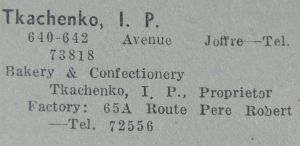 Wujiang lu is one of the most popular and peculiar streets of Shanghai. It’s a restaurant street. My office moved on this street about 4 years ago, before it was actually pedestrianized. Their was not many cars crossing, but every now and then a Shanghai driver would force his way through the crowd. The street was blocked for cars last year, and is full every night with people eating small snacks on sale in the many shops.
Wujiang lu is one of the most popular and peculiar streets of Shanghai. It’s a restaurant street. My office moved on this street about 4 years ago, before it was actually pedestrianized. Their was not many cars crossing, but every now and then a Shanghai driver would force his way through the crowd. The street was blocked for cars last year, and is full every night with people eating small snacks on sale in the many shops.
When we moved in the tower (in the background of picture left below), the owner of the office proudly told me “All these horrible old buildings will be destroyed in 3 months and they will create a nice park instead”. It was so true that although the building is physically on WuJiang Lu, there is also a postal address on Nanjing Xi Lu… for the time when these buildings will not exist anymore. This was more than 4 years ago and the buildings still stand although the neighborhood has already been destroyed (Click here to see post “Another one bites the dust“). Unfortunately, this is all about to change.
 |
 |
Restaurants are still serving, but shops on the Shi Men Yi Lu side of the blockare already closed down and walled up. Soon will come the last serving on Wu Jiang Lu. The city will loose one it noisiest but also most popular street. This part of Shanghai will become more shiny, more modern and more sterile. Like in other areas, the renovation is a great excuse to destroy very nice old buildings that could be renovated. It surely will make much more money for the developers, but will also greatly alter the landscape of this part of Shanghai.
The block separating Wujiang lu from Nanjing Xi lu is one single building. Like many of the old Shanghai, it is a combination of several styles (art deco mixed with beaux-arts and neoclassical columns). Still there is something really nice about the round shape espousing the street corners (see pictures below). To judge form the construction details and location, this was once a luxury apartments and high class shops building. Renovation could have made a great small boutique shopping center out of it, keeping the corner’s historical view while creating high street shopping… just like this was done on Huai Hai lu. Unfortunately, this is not what will happen and soon this building will be gone. I particularly like the balconies, the columns, the shape of the building and the white shape repeating itself all along the facade. They are detailed on the pictures below. Adieu little building on the corner of Bubbling well road and Yates road.

|

|


 The Royal Asiatic Society in Shanghai was an association created to promote “science, literature and art” in relation to Asia and China”. Born in 1857 it grew so much that it had a building near the Bund (picture left), that hosted a museum and a library. A large part of the museum collection (mostly stuffed birds and animals) is today in the Shanghai museum of natural history and most of the library ended up in Xu Jia Hui library along with the Bibliotheca Zikawei from the Jesuits fathers… but the RAS building still stands (picture left). The society published a journal 4 times a year, publishing articles related to Asia and China. In the city of money and trade, a small group of people was working hard to develop culture and intellectual activities.
The Royal Asiatic Society in Shanghai was an association created to promote “science, literature and art” in relation to Asia and China”. Born in 1857 it grew so much that it had a building near the Bund (picture left), that hosted a museum and a library. A large part of the museum collection (mostly stuffed birds and animals) is today in the Shanghai museum of natural history and most of the library ended up in Xu Jia Hui library along with the Bibliotheca Zikawei from the Jesuits fathers… but the RAS building still stands (picture left). The society published a journal 4 times a year, publishing articles related to Asia and China. In the city of money and trade, a small group of people was working hard to develop culture and intellectual activities.
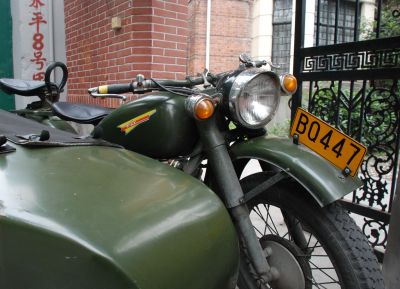
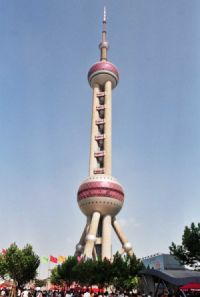 Shanghai history museum is one of these things that has been on my to-do list since several years. It took a rainy Sunday to get me to visit it. Focusing on 1920’s Shanghai, it would be perfect somewhere in the old concessions, in a renovated old house recreating colonial charm. At the contrary, it is located under the Oriental Pearl Tower, in the hear of Lujiazui skyscraper’s field. Going there on a rainy Sunday I was not expecting much, but it was a nice surprise.
Shanghai history museum is one of these things that has been on my to-do list since several years. It took a rainy Sunday to get me to visit it. Focusing on 1920’s Shanghai, it would be perfect somewhere in the old concessions, in a renovated old house recreating colonial charm. At the contrary, it is located under the Oriental Pearl Tower, in the hear of Lujiazui skyscraper’s field. Going there on a rainy Sunday I was not expecting much, but it was a nice surprise.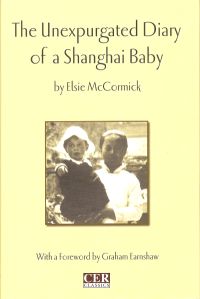 I still don’t understand how come I did not see this book in Shanghai… but bought it in Beijing instead. “The Unexpurgated Diary of a Shanghai Baby” is captioned by Graham Earnshaw as his “favorite book on old Shanghai by a long margin”. I knew the name of Graham Earnshaw throught
I still don’t understand how come I did not see this book in Shanghai… but bought it in Beijing instead. “The Unexpurgated Diary of a Shanghai Baby” is captioned by Graham Earnshaw as his “favorite book on old Shanghai by a long margin”. I knew the name of Graham Earnshaw throught 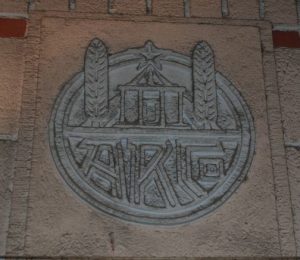
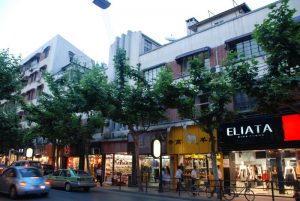
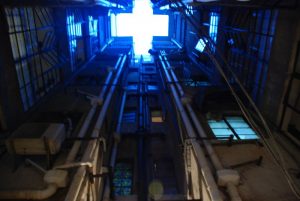
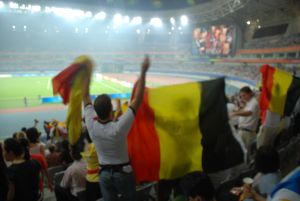 The 2008 Olympic games mainly take place in Beijing, but a small bit is happening is other cities. Of course, all finals and prestigious events will be in Beijing, but other cities got some leftovers. Shanghai was generously granted the right to host a few qualifier football game. It was very difficult to get tickets for Olympic events, and only few people I know actually flew to Beijing to attend. Since we got tickets for a game taking place in Shanghai, two metro stops away from home, we decided to give it a go.
The 2008 Olympic games mainly take place in Beijing, but a small bit is happening is other cities. Of course, all finals and prestigious events will be in Beijing, but other cities got some leftovers. Shanghai was generously granted the right to host a few qualifier football game. It was very difficult to get tickets for Olympic events, and only few people I know actually flew to Beijing to attend. Since we got tickets for a game taking place in Shanghai, two metro stops away from home, we decided to give it a go.
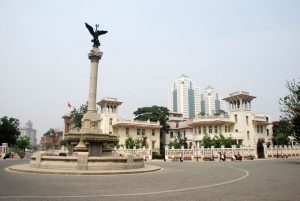
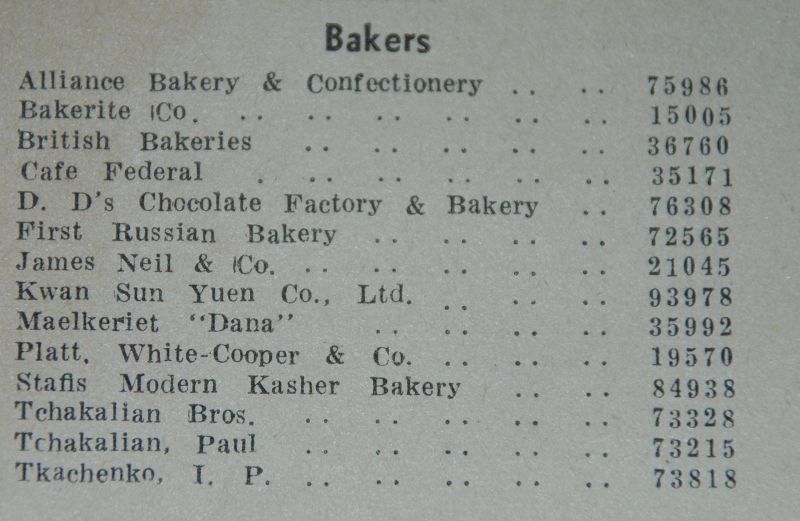 I looked into the “bakery” entry of this older version of the phone book and found out 15 entries. I remember reading that the bakery business in the 30’s was run by many Russians in Shanghai. By looking at the names of the shop, at least 5 of them were run by Russians. The most obvious was First Russian bakery, Tchakalian (more about in a further post) and Tkachenko.
I looked into the “bakery” entry of this older version of the phone book and found out 15 entries. I remember reading that the bakery business in the 30’s was run by many Russians in Shanghai. By looking at the names of the shop, at least 5 of them were run by Russians. The most obvious was First Russian bakery, Tchakalian (more about in a further post) and Tkachenko.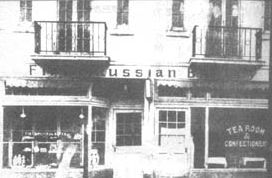 First Russian bakery is pictured right (picture is from the website of the Shanghai municipal archives). Located on 234-
First Russian bakery is pictured right (picture is from the website of the Shanghai municipal archives). Located on 234-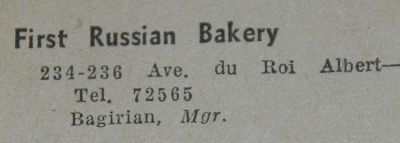 236 Avenue du Roi Albert (This now Shanxi Nan Lu, the location was approximately opposite Parkson on the other side of Shanxi Nan Lu). This was the urban art of the French Concession where many small apartment buildings were built, not far from
236 Avenue du Roi Albert (This now Shanxi Nan Lu, the location was approximately opposite Parkson on the other side of Shanxi Nan Lu). This was the urban art of the French Concession where many small apartment buildings were built, not far from 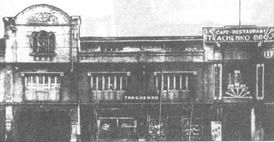 Tkachenko bakery was also pictured on the same website.
Tkachenko bakery was also pictured on the same website.